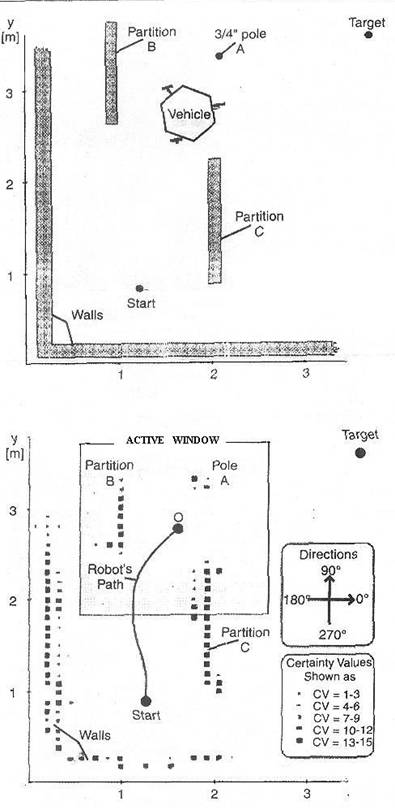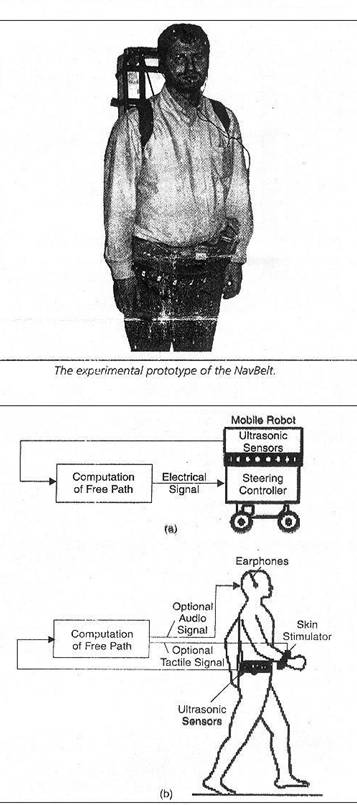





Published on Apr 02, 2024
Recent revolutionary achievements in robotics and bioengineering have given scientists and engineers great opportunities and challenges to serve humanity. This seminar is about "NAVBELT AND GUIDECANE", which are two computerised devices based on advanced mobile robotic navigation for obstacle avoidance useful for visually impaired people. This is "Bioengineering for people with disabilities".
NavBelt is worn by the user like a belt and is equipped with an array of ultrasonic sensors. It provides acoustic signals via a set of stereo earphones that guide the user around obstacles or displace a virtual acoustic panoramic image of the traveller's surroundings. One limitation of the NavBelt is that it is exceedingly difficult for the user to comprehend the guidance signals in time, to allow fast work.
A newer device, called GuideCane, effectively overcomes this problem. The GuideCane uses the same mobile robotics technology as the NavBelt but is a wheeled device pushed ahead of the user via an attached cane. When the Guide Cane detects an obstacle, it steers around it. The user immediately feels this steering action and can follow the Guide Cane's new path easily without any conscious effort. The mechanical, electrical and software components, user-machine interface and the prototypes of the two devices are described.
With the development of radar and ultrasonic technologies over the past four decades, a new series of devices, known as Electronic Travel Aids (ETA’s), was developed. This seminar introduces two novel ETA’s that differ from the ETA’s like C5 laser cane, Mowat sensor, in their ability to not only detect obstacles but also to guide the user around detected obstacles.
Obstacle Avoidance Systems (OAS) originally developed for mobile robots, lend themselves well to incorporation in Electronic Travel Aids for the visually impaired. An OAS for mobile robots typically comprises a set of, ultrasonic or other sensors and the computer algorithm that uses the sensor data to compute the safe path around detected obstacle. One such algorithm is the Vector Field Histogram (VFH).
The VFH method is based on information perceived by an array of ultrasonic sensors (also called Sonars) and a fast statistical analysis of that information. The VFH method builds and continuously upgrades a local map of its immediate surroundings based on recent Sonar data history. The algorithm then computes a momentary steering direction and travel speed and sends this information to the mobile robot. The ultrasonic sensors are controlled by the Error-Eliminating Rapid Ultrasonic Firing (EERUF) method. This method allows Sonars to fire at rates that are five to ten times faster than conventional methods.

In the VHF method, the local map is represented by a two-dimensional (2D) array, called a Histogram Grid. The 2D Histogram Grid is reduced to a one-dimensional Polar Histogram that is constructed around the robot’s momentary location. The Polar Histogram provides an instantaneous 360˚ panoramic view of the immediate environment, in which elevations suggests the presence of obstacles, and valleys suggests that the corresponding directions are free of obstacles. The Polar Histogram has 72 sectors that are each 5˚ wide. The numeric values associated with each sector are called Obstacle Density Values. Figure (1), shows the Polar Histogram created from an actual experiment, wherein, high Obstacle Density Values are shown as taller bars in the bar chart-type representation. Hence, the Polar Histogram provides comprehensive information about the environment (with regard to obstacles).
The NavBelt consists of a belt, a portable computer, and an array of ultrasonic sensors mounted on the front of the belt. Eight ultrasonic sensors, each covering a sector of 15˚ are mounted on the front pack, providing a total scan range of 120˚.The computer processes the signals that arrive from the sensors and applies the robotic obstacle-avoidance algorithms. The acoustic signals are relayed to the user by stereophonic headphones. Figure (2), shows the experimental prototype of the device and pictorial representation of it’s concept.

A binaural feedback system based on internal time difference (i.e. the phase difference between the left and right ears) and amplitude difference (i.e. the difference in amplitude between the two ears) creates a virtual direction (i.e. an impression of directionality of virtual sound sources). The binaural feedback system is used differently in each of the three operational modes.
OPERATIONAL MODES: - The NavBelt is designed for three basic operational modes, each offering a different type of assistance to the user.
In the guidance mode, the NavBelt only provides the user with the recommended travel speed and direction, generated by the VFH obstacle-avoidance algorithm. In this mode, the system attempts to bring the user to a specified absolute target location. The VFH (Vector Field Histogram) method calculates its recommendation for the momentary travel direction from the polar histogram by searching for sectors with a low obstacle density value. Next, the VFH algorithm searches for the candidate sector that is nearest to the direction of the target and recommends it to the user.
The recommended travel speed is determined by the VFH method according to the proximity of the user to the nearest object. The recommended travel speed and direction are relayed to the user by a single stereophonic signal. An important parameter involved in the guidance mode is the rate at which signals are transmitted. When the user is travelling in an unfamiliar environment cluttered with a large number of obstacles, the transmission rate increases and may reach up to 10 signals per second. On the other hand, when travelling in an environment with little or no obstacles, the transmission rate is one signal every three second.
| Are you interested in this topic.Then mail to us immediately to get the full report.
email :- contactv2@gmail.com |